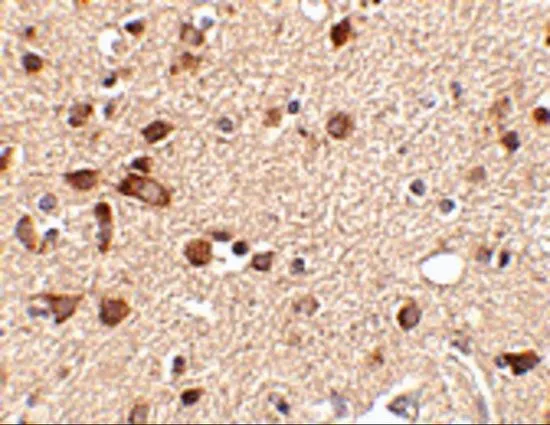
IHC-P analysis of human brain tissue using GTX85023 STK39 antibody. Working concentration : 2.5 microg/ml
STK39 antibody
GTX85023
ApplicationsWestern Blot, ELISA, ImmunoHistoChemistry, ImmunoHistoChemistry Paraffin
Product group Antibodies
TargetSTK39
Overview
- SupplierGeneTex
- Product NameSTK39 antibody
- Delivery Days Customer9
- Application Supplier NoteWB: 1 - 2 microg/mL. IHC-P: 2.5 microg/mL. *Optimal dilutions/concentrations should be determined by the researcher.Not tested in other applications.
- ApplicationsWestern Blot, ELISA, ImmunoHistoChemistry, ImmunoHistoChemistry Paraffin
- CertificationResearch Use Only
- ClonalityPolyclonal
- Concentration1 mg/ml
- ConjugateUnconjugated
- Gene ID27347
- Target nameSTK39
- Target descriptionserine/threonine kinase 39
- Target synonymsDCHT, PASK, SPAK, STE20/SPS1-related proline-alanine-rich protein kinase, STE20/SPS1 homolog, Ste20-like protein kinase, proline-alanine-rich STE20-related kinase, serine threonine kinase 39 (STE20/SPS1 homolog, yeast), serine/threonine-protein kinase 39, small intestine SPAK-like kinase, ste-20-related kinase
- HostRabbit
- IsotypeIgG
- Protein IDQ9UEW8
- Protein NameSTE20/SPS1-related proline-alanine-rich protein kinase
- Scientific DescriptionThe serine/threonine kinase Stk39 belongs to the STE20 family, a group of kinases that are known to interact with inflammation-related kinases (such as p38, JNK, NKCC1, PKC-theta, WNK and MLCK), and with transcription factor AP-1. The STE 20 family is involved in diverse biological phenomena, including cell differentiation, cell transformation/ proliferation, cytoskeleton rearrangement, and the regulation of ion transporters. STK39 contains an N-terminal series of proline and alanine repeats (PAPA box), followed by a serine/threonine kinase catalytic domain and is abundantly expressed in the brain. STK39 is activated in response to hypotonic stress, leading to phosphorylation of several cation-chloride-coupled co-transporters. The catalytically active kinase specifically activates the p38 MAP kinase pathway, and its interaction with p38 decreases upon cellular stress, suggesting that this kinase may serve as an intermediate in the response to cellular stress. Recent studies show that STK39 tend to be a novel candidate gene for autism and hypertension.
- Storage Instruction-20°C or -80°C,2°C to 8°C
- UNSPSC12352203

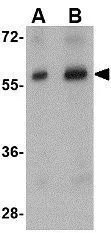

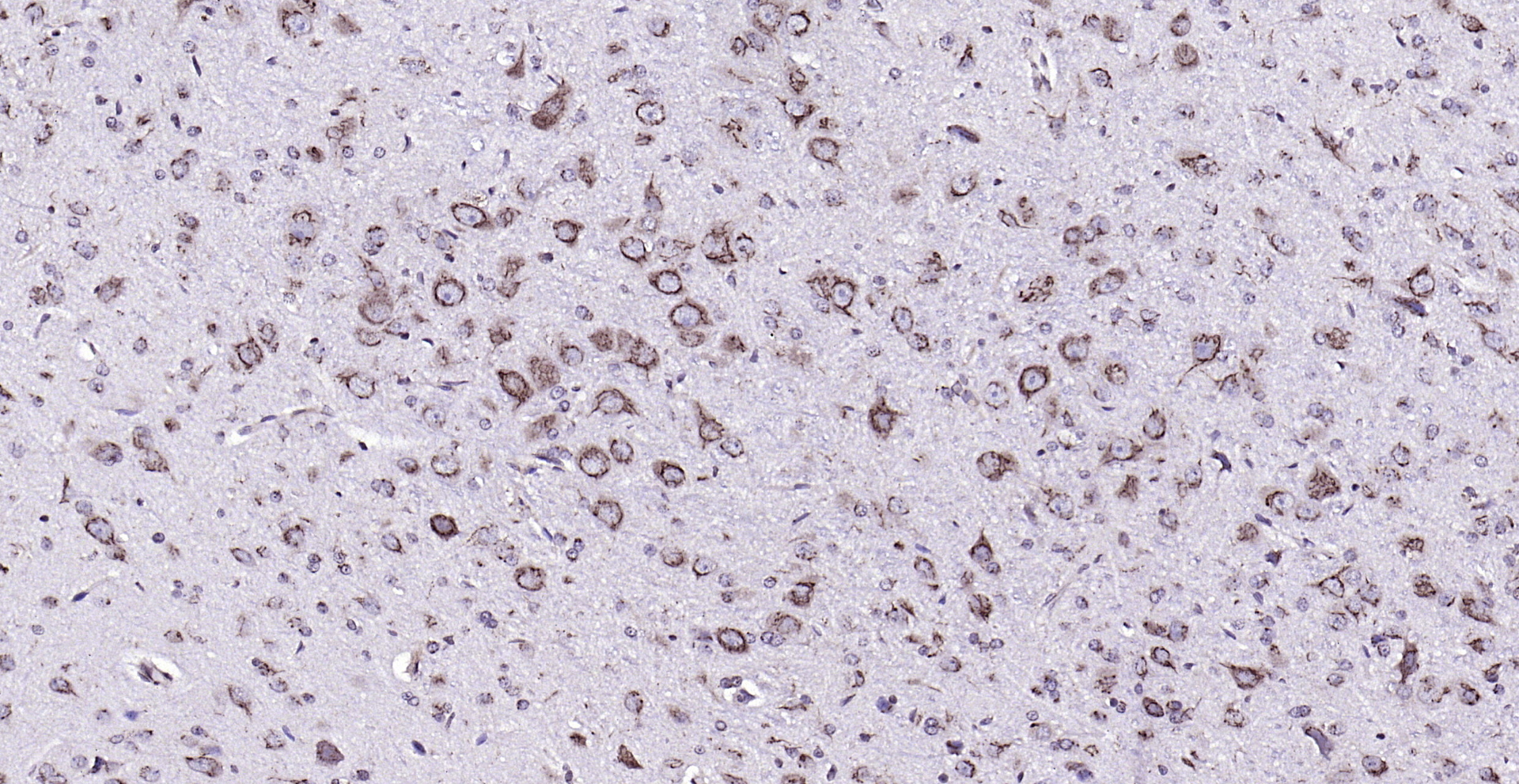
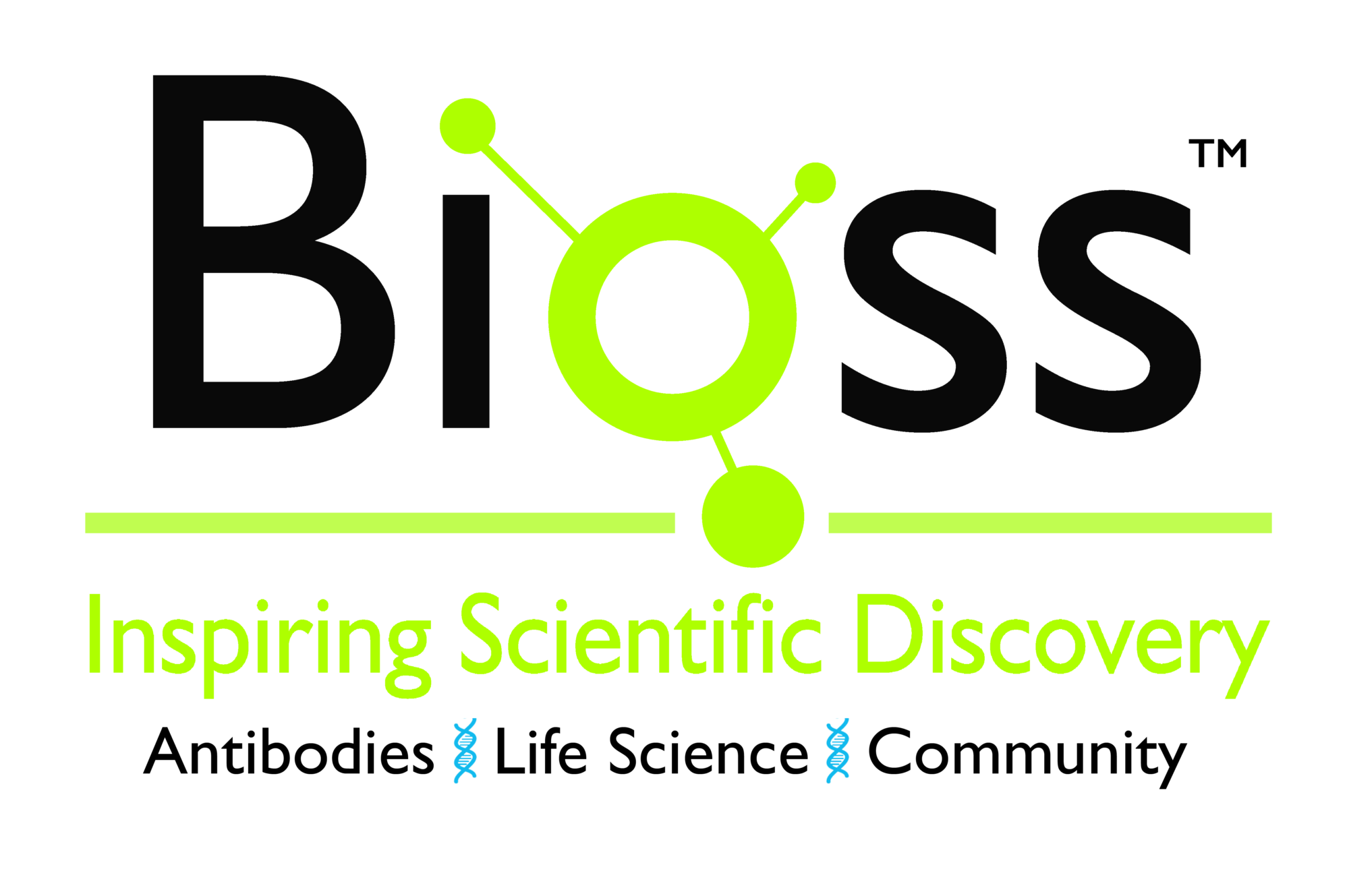

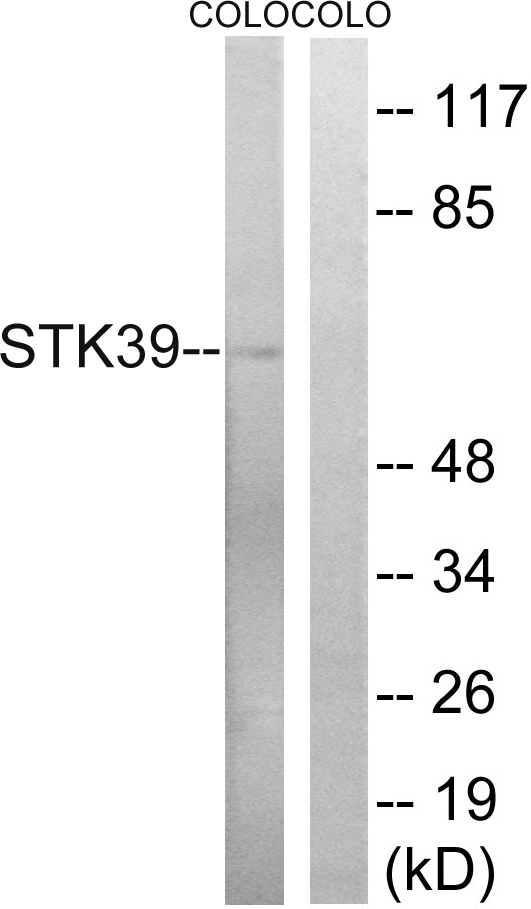

![IHC-P analysis of human colon adenocarcinoma tissue using GTX83541 STK39 antibody [3C12]. Antigen retrieval : Heat-induced epitope retrieval by 10mM citrate buffer, pH6.0, 100oC for 10min.](https://www.genetex.com/upload/website/prouct_img/normal/GTX83541/GTX83541_1526_IHC-P_w_23061420_261.webp)
![IHC-P analysis of human breast adenocarcinoma tissue using GTX83542 STK39 antibody [4E3]. Antigen retrieval : Heat-induced epitope retrieval by 10mM citrate buffer, pH6.0, 100oC for 10min.](https://www.genetex.com/upload/website/prouct_img/normal/GTX83542/GTX83542_1531_IHC-P_w_23061420_179.webp)
![IHC-P analysis of breast adenocarcinoma tissue using GTX83543 STK39 antibody [2E10]. Antigen retrieval : Heat-induced epitope retrieval by 10mM citrate buffer, pH6.0, 100oC for 10min. Dilution : 1:50](https://www.genetex.com/upload/website/prouct_img/normal/GTX83543/GTX83543_1535_IHC-P_w_23061420_693.webp)